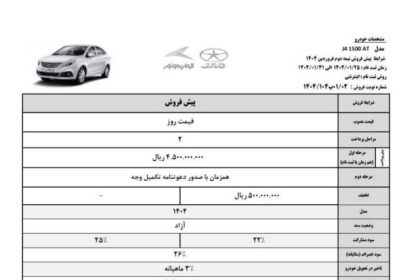Everyone has done the abdominal vacuum movement at least once in their life. Now, not in its most complete form, but it has undoubtedly tried to do this move to some extent. You're probably wondering what the abdominal vacuum is, we've all done it, but we don't even know what exactly it is!
It has definitely happened to you many times that you have contracted your abdominal muscles in front of others or in the peru room to make your stomach look smaller and more compact. This is the exercise of abdominal vacuum. In this article, we want to teach you the movement of abdominal vacuum in the most professional way possible.
What is abdominal vacuum movement?
Abdominal vacuum is actually a sports movement during which you have to contract some internal abdominal muscles. During the abdominal vacuum movement, the transverse abdominal muscle, which is the innermost muscle of the outer abdominal wall muscles, will contract.
In the 1970s and 1980s, this seemingly simple movement of the abdominal vacuum was one of the most important movements that the best and most prominent bodybuilders in the world used to showcase their abilities.
In the past, doing this movement was more for show and aesthetic, and bodybuilders used this movement to make their bodies look more muscular. Of course, now this movement is not used in bodybuilding, and less bodybuilding uses this movement for shaping in competitions.

What muscles does the abdominal vacuum target?
This movement engages the muscles of the anterior outer wall of the abdomen well; Muscles like:
- right abdomen
- Abdominal external oblique
- Internal oblique of the abdomen
- Transverse abdominal muscle
What are the benefits of vacuum movement?
You may be surprised by the many advantages and benefits of this movement. In this section, we will list some of the advantages of abdominal vacuum.
1. Strengthening the muscles of the back and abdomen
Many athletes and experts believe that because of the involvement of the abdominal muscles during this movement, the vacuum will make the muscles of the lower back and abdomen stronger. The practice and repetition to perform the vacuum figure engages the transversus abdominis muscles (the rectus abdominis muscle and the external oblique muscles of the abdominis).
Usually, in bodybuilding exercises, transverse abdominal muscles are completely forgotten. This is while the transversus abdominis muscle is very important and is located in both left and right parts of your body.
Anatomy of abdominal muscles


2. Help regulate the digestive system
The intestine is one of the main organs of the body's digestive system, which is known as the second brain of the body due to the presence of 100 million neurons in this organ. Interestingly, performing the LPF or abdominal vacuum movement will help regulate the digestive system a lot.
Experts believe that diseases such as Crohn's, ulcerative colitis, diabetes, Parkinson's, constipation, diarrhea and indigestion and similar problems related to the intestine can be improved by performing regular and daily abdominal vacuum exercises.
3. Improve back pain
A group of Australian physiotherapists discovered the effectiveness of the abdominal vacuum technique to improve back pain. They published a paper on this in 1999 that showed that people with back pain problems have weak transverse abdominis muscles and the solution is to use a movement to engage this muscle alone. It was here that the foot movement of the abdominal vacuum was opened to physiotherapy.
4. Improve body shape
When you perform the Vacuum Abdominal movement and contract your abs, your core will be strengthened, intentionally or unintentionally. In fact, by doing a vacuum, your body shape will gradually improve and you will stand straighter than before.
Abdominal vacuum movement training
You can try different ways to perform this movement and engage the transverse abdominal muscles. It is better to choose one of the levels to start practicing abdominal vacuum and start practicing. Note that level 1 is the most basic form and level 4 is the most difficult form to perform this movement. If you weren't able to do any of these levels, you probably need more training and still need to spend time on your abs.
Level 1
This level is the most comfortable position to perform the abdominal vacuum movement, and if your abdominal muscles are not very strong, it is better to start the movement with this body form.
How to move
- Lie on your stomach on the floor and contract your stomach;
- Take a few deep breaths and finally, expel all the air from your lungs;
- tighten your stomach as much as you can and bring your navel as close to your spine as possible;
- Keep the muscles tight and stay in this position as long as you can and do not breathe. The moment you feel that you must breathe, you can release your abdominal muscles and return to the original position;
- You can repeat this movement for abdominal vacuum after a short rest.
Level 2
This movement is more difficult to perform abdominal vacuum due to the shape of the body in the position of all fours and legs, and your abdominal muscles should be stronger than level one.


How to move
- Sit on all fours on the ground;
- Take a few deep breaths again and then completely release the air collected in your diaphragm;
- As in the previous movement, contract your stomach and pull your navel into your stomach as much as you can. You should feel that you are attaching your navel to your spine;
- To make the movement more difficult and engage your abdominal muscles more, it is better to release and retract the abdominal muscles several times without taking a breath.
Level 3
This level is done in a sitting position, and from this point on, other professional athletes can perform these movements in the best possible way.


How to move
- Sit on a chair and take a few deep breaths;
- Place your hands on the thighs and try to perform the abdominal vacuum movement as in the previous exercises (so-called sticking your navel to the spine);
- While performing this movement, by releasing and re-contracting the abdominal muscles (without venting and breathing), you can make the vacuum movement harder and involve the transverse muscles of the abdomen more;
- Wherever you feel you need to breathe, release the muscles and take a deep breath. Take a short rest and repeat the movement.


Level 4
Welcome to the giant step of performing abdominal vacuum movement! This stage is the most difficult mode in which you have to perform the vacuum movement. At this point, the movement will be performed in a standing position.


How to move
- Stand straight and place one hand on the lower back and the other on the lower abdomen for more support; (Placement of hands will help a lot to do this movement better)
- Take a few deep breaths again and expel all the air from your lungs;
- Pull the stomach in as much as possible using the transversus abdominis muscles, and if you are looking for more of a challenge, you can release and contract your muscles a few times;
- Hold this position until you need to breathe;
- Then release the muscles and repeat the movement again.


Important points in performing abdominal vacuum movement
To perform vacuum training and abdominal contraction, you must know and observe various points so that you do not get any injuries and can get good results from your training.
1. Learn the exercise technique well and then do it!
Abdominal vacuum training is very important. Performing the exercise in the wrong way has no benefit and is even harmful. If after reading this article, you are still not sure how to perform the exercise correctly, ask the trainer to explain the movement to you completely.
2. Avoid hunching!
Leaning forward, rounding your back, or tilting your pelvis causes your rectus abdominis to contract more than your transversus abdominis, and is wrong.
3. Exercise in the morning on an empty stomach!
In order to vacuum and deflate the abdomen, it is important to perform this movement after waking up and before you have eaten, otherwise it will cause discomfort or pain.
4. Breathe!
Remember to breathe, you don't need to hold your breath while doing abdominal exercises. If you have properly contracted your transversus abdominis, you should be able to breathe while holding this position.
5. Do other exercises too!
Do not neglect other muscles and other exercises. Abdominal vacuum is a great movement to strengthen the abdominal muscles, but you still need to do exercises to strengthen the pelvic floor muscles or the erector spinae muscles (and other back muscles). With a vacuum, your work in strengthening the midsection is not over!
6. If you have pain, stop training!
If you experience problems such as pain or discomfort while doing abdominal vacuum exercises, stop the exercise and consult a trainer or doctor later to make sure that this exercise is right for you.
7. Be careful!
If you have high blood pressure, it is better to do this movement with more caution, because doing this movement will increase the blood pressure to a significant extent. Also, it is forbidden to perform this movement for pregnant women and they should not even try this movement under any circumstances.
Does tucking in the stomach cause weight loss?
No; Tummy tuck has no effect on slimming. When you pull your stomach in, it will strengthen your abdominal muscles to some extent, but it will not do anything to reduce belly fat.
To lose belly fat and reduce fat in this area, you need to combine cardio exercises, bodybuilding (strength) exercises and a proper diet. Basically, reducing body fat is achieved through proper diet and adequate exercise. You can get your special program from vitamin experts right now.
Does abdominal vacuum burn belly fat?
No! not at all! Abdominal vacuum is a deep and effective exercise, but the effects of this exercise are exaggerated. Abdominal vacuum cannot directly cause fat burning. This exercise is mostly used to strengthen the internal abdominal muscles.
You are not going to do vacuum training for a while and suddenly have a flat stomach, if you do not have a proper diet and exercise program, you will not achieve results. If you like to do this exercise, just do it to strengthen your abdominal muscles and get rid of the “thin” or “flat stomach” mentality.
How to get the best result from abdominal vacuum?
See the abdominal vacuum only as an auxiliary exercise for the muscles of the middle body and do not count on it too much in any way. It is necessary to combine this exercise with other exercises such as cardio exercises and strength exercises to get better results. If you want to lose weight or flatten your stomach, you must have a targeted diet plan.
final word
Abdominal vacuum movement strengthens various abdominal and back muscles and helps to improve body shape and digestive system function, but it does not have a special effect on creating a flat stomach. To achieve belly fat burning, you must have a targeted diet and exercise plan. In this article, we learned about the abdominal vacuum movement, how to do it, and the benefits of holding the abdomen.
Source: livestrong – youtube – healthline
RCO NEWS
RCO
















